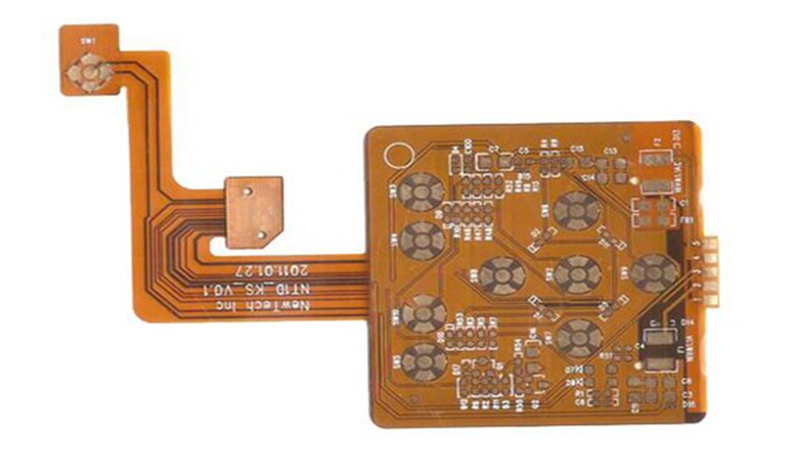The names of the circuit boards are: circuit board, PCB board, aluminum substrate, high frequency board, thick copper board, impedance board, PCB, ultra-thin circuit board, ultra-thin circuit board, printing (copper etching technology) circuit board, etc. There are Rigid Flex PCB Design and more. The circuit board makes the circuit miniaturized and intuitive, and plays an important role in mass production of fixed circuits and optimization of electrical layout. A circuit board can be referred to as a printed circuit board or a printed circuit board.
Multilayer Flexible PCB
There is a phenomenon of beryllium copper on the PCB board. What is the reason for this? Multilayer Flexible PCB Manufacturer will tell you next.
Local collision occurs in the PCB circuit board process, and the copper wire is separated from the base by external mechanical force. This phenomenon is a poor positioning, the copper wire will have obvious distortion, or scratches and impact marks in the uniform direction. Pull out the copper wire of the bad place to see the copper foil surface, it can be seen that the copper foil surface is normal, there will be no side erosion, and the copper foil peeling strength is normal. PCB circuit board design is unreasonable. Designing a thin line with thick copper foil will also cause excessive etching of the line and copper.
Copper foil is excessively etched. The electrolytic copper foil used on the market is generally single-sided galvanized (commonly known as ash foil) and single-sided copper plating (commonly known as red foil). Common copper bismuth is generally galvanized copper foil of 70um or more. There are basically no batches of beryllium copper in the red foil and the ash foil below 18um. When the customer circuit is designed to pass through the etched line, if the copper foil specification is changed and the etching parameters are not changed, the residence time of the copper foil in the etching solution is too long. Because zinc is originally a reactive metal, when the copper wire on the PCB is immersed in the etching solution for a long time, it will lead to excessive side etching of the line, causing some fine line backing zinc layer to be completely reacted and detached from the substrate. That is, the copper wire falls off.
There is also a case where there is no problem with the PCB etching parameters, but the water is washed after etching, and the drying is poor, so that the copper wire is also surrounded by the etching liquid remaining on the surface of the PCB board. If it is left untreated for a long time, excessive copper side etching will occur. And bismuth copper. This situation is generally manifested on the thin line, or in the wet weather, the same PCB will appear similarly bad, peeling off the copper line to see its contact with the base layer (the so-called rough surface) color has changed, Unlike the normal copper foil color, the original copper color is seen, and the peeling strength of the copper foil at the thick line is also normal.
The above is the explanation of the reasons for the export of copper on the PCB board by the 2 Layers Flexible PCB Supplier. I hope that we can do it to everyone.

没有评论:
发表评论